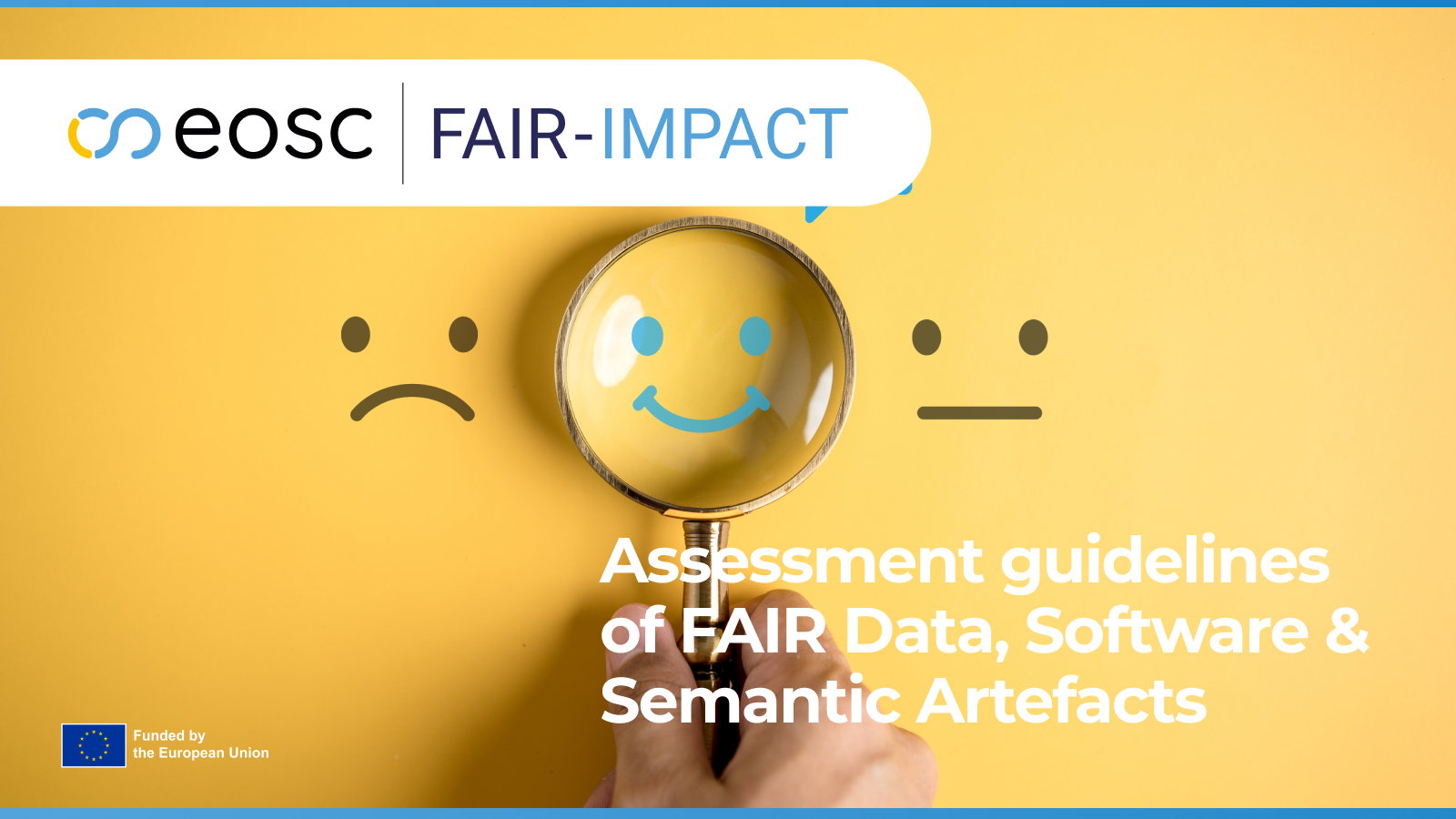To help researchers, data support staff and others in their FAIR journey, we’ve created several pages on our website about metrics, tools and guidelines that help you find the right tools for your FAIR question.
Are your data, your software or your semantic artefacts FAIR enough?
Metrics for data
In the FAIR-IMPACT project, the seventeen minimum viable metrics proposed by FAIRsFAIR for the systematic assessment of FAIR data objects are being refined and extended. The metrics are presented with a description and background and are mapped to their related FAIR principle. The alignment with the CoreTrustSeal Requirements for Trustworthy Digital Repositories is also presented for each metric. Check them and test if your data is FAIR enough.
Metrics for software
Software requires different considerations when it comes to theoretically and practically designing FAIR. In 2022, the FAIR principles for Research Software (FAIR4RS) were published (Chue Hong et al.), which extended the original principles to more effectively cover software. After this initial design of the principles, FAIR-IMPACT now works on translating them into metrics and practical tests that can be automatically assessed using a tool. You can already consult the metrics to check if your software is FAIR.
Metrics for semantic artefacts
Semantic artefacts can be evaluated using automated FAIR assessment tools. The FAIR-IMPACT project aims to broaden FAIR assessment to include more than just data. By adhering to community best practices and recommendations, FAIR-IMPACT has developed two approaches to assess semantic artefacts.
FAIR Assessment Methodology: We propose a methodology for evaluating semantic artefacts (such as vocabularies and ontologies) by enhancing the Linked Open Terms Methodology (LOT) for ontology development. This enhanced methodology introduces two new phases: FAIR pre-assessment (i.e. for artefacts not yet public) and FAIR assessment (i.e. for artefacts ready for web publication).
FAIR by Design Methodology: The FAIR assessment methodology evaluates existing semantic artefacts, while the D4.2 deliverable will focus on a methodology for creating FAIR semantic artefacts and their contexts. It identifies gaps in current ontology engineering practices and offers solutions to address them during development.
In summary, semantic artefacts can be assessed using automated FAIR assessment tools, and the aim is to extend this assessment beyond data, proposing methodologies for pre-existing and newly developed artefacts.
Transparency guidelines
FAIR-IMPACT supports the implementation of FAIR-enabling practices, tools, and services. To this end, guidelines and a prototype are being developed to improve the transparency of, and trust in, repositories.
The guidelines help to expose relevant information as metadata at the organisational and object level to facilitate discovery, provide context, and support interoperability. The guidelines will also recommend accompanying evidence in a uniform and transparent way, to create a sense of trust in the services themselves and service providers that expose information.
About FAIR-IMPACT
The FAIR-IMPACT project supports the implementation of FAIR-enabling practices, tools and services across scientific communities at a European, national and institutional level by active engagement and support to ensure widespread implementation and adoption of the FAIR (Findable, Accessible, Interoperable, Reusable) principles, to define and share standards and develop tools and services, to allow researchers to find, access, reuse and combine research results.
With this page, we hope to help you in your FAIR-Enabling journey! Would you like more personal contact on the topic of metrics, assessment and guidelines?
Get in touch with us by sending an email to metrics AT fair-impact DOT eu.
